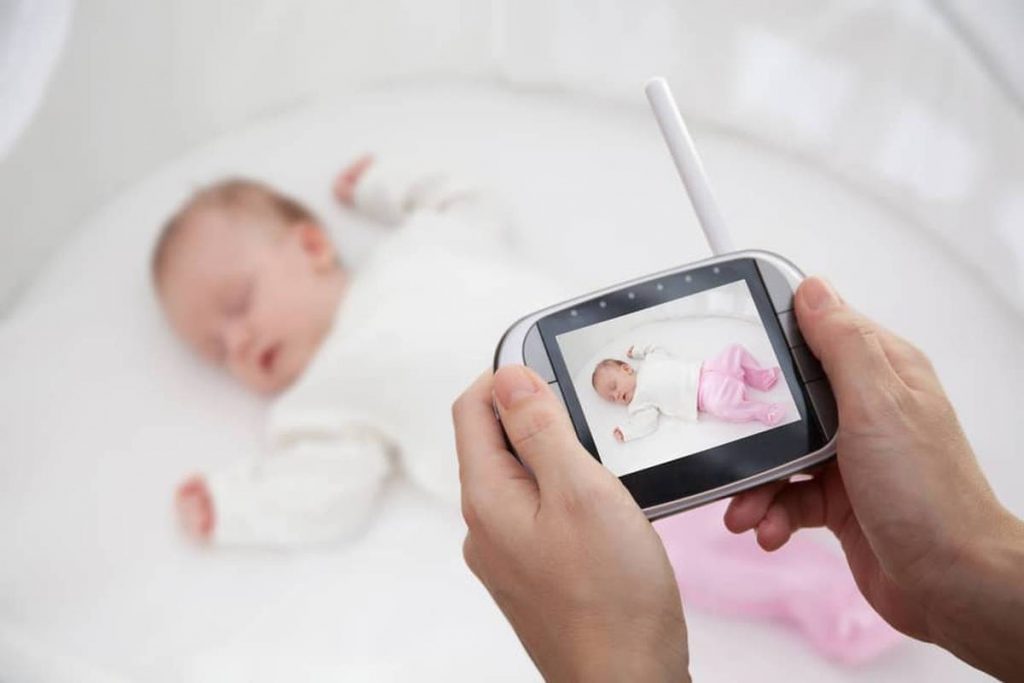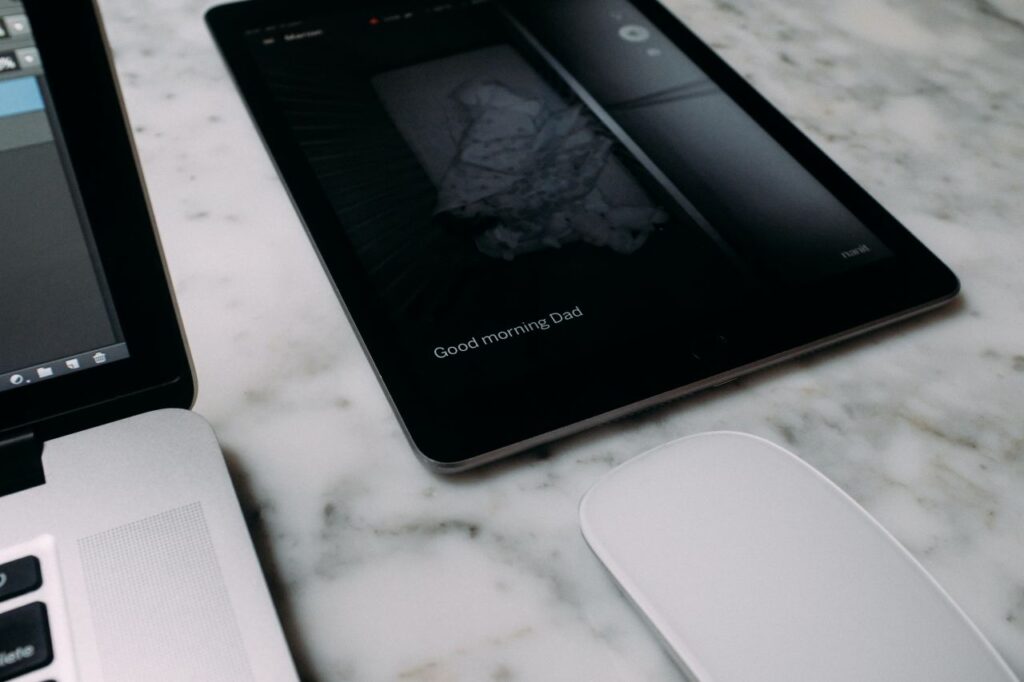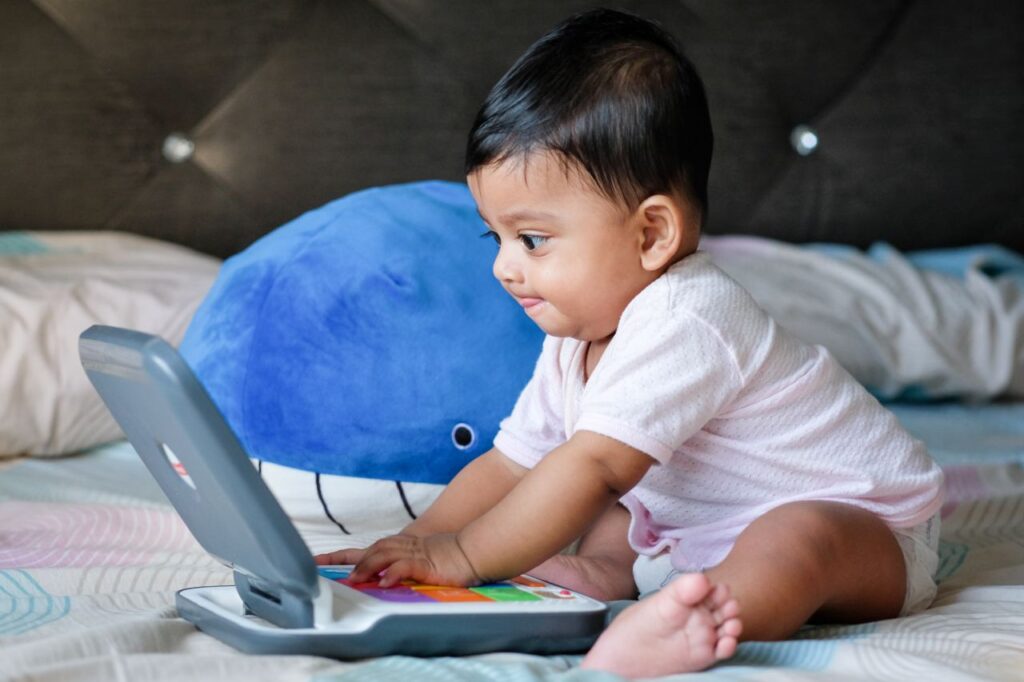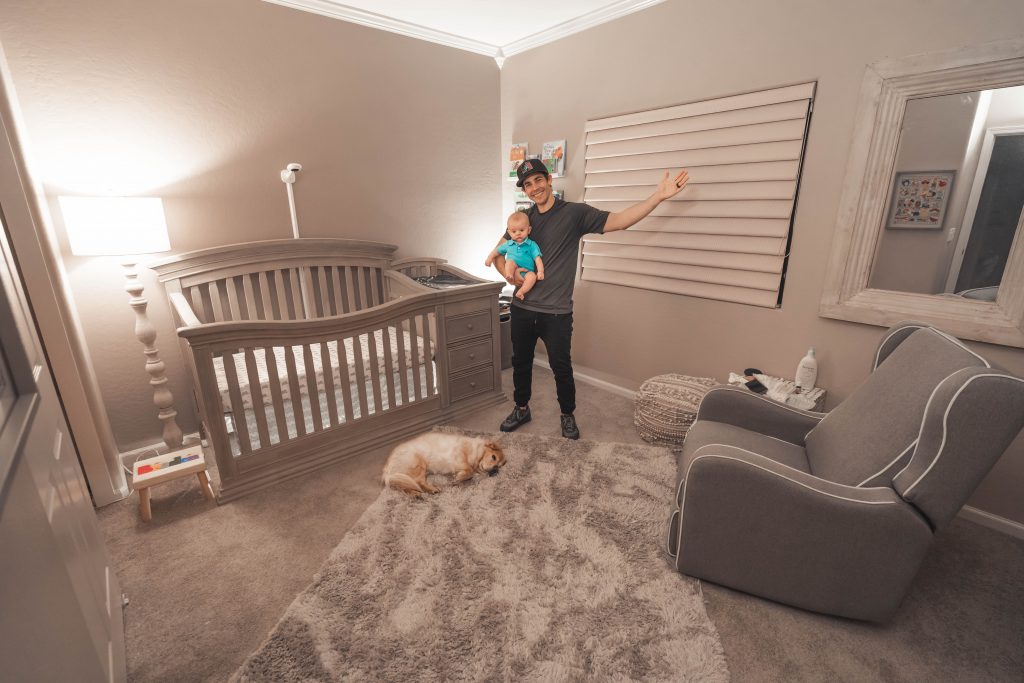Baby monitors are cherished by parents because they provide us the opportunity to keep an eye on our children even when we can't be there. It's that ingenious tool that makes bedtime routines more conducive to educating your body to go to sleep. Thankfully, you no longer have to sneak a glimpse at your sleeping baby by hesitantly creaking open the nursery door and risking being spotted by your wide-eyed infant. Now that the latest generation of high-tech baby monitors is affordable to the people, millions of families have purchased not one, not two, but three of these devices to provide an extra layer of safety for their children. Some parents, however, lack the necessary background knowledge to properly utilise the baby monitor. In order to assist you get the most out of your baby monitor and give you some much-needed peace of mind, We have compiled a few pointers on how to get the most out of it.
In the beginning, it's natural to feel overwhelmed by the abundance of baby goods on the market. In any case, when you become more familiar with your newborn needs checklist, you may realise that some items aren't necessary after all.
When you need to keep an eye on your kid as they sleep, baby monitors are a common alternative. As it is advised that a baby sleeps best in the parent's room for the first six months, baby monitors are a convenient method to keep an eye on your child once they have graduated to their own space.
Check out our range of baby nursery products and furniture for all your baby needs.
Read Up
Every parent wants to ensure that their child has a secure place to sleep. If you want to avoid any mishaps with your brand-new baby monitor, make sure to read the manual first. This is not going to be a New York Times bestseller, but please don't discount it. Also, make sure you read the caution label on the baby monitor's power cord. Using your monitor in the safest possible manner is made easier with the knowledge provided here.
Location
Ideally, the baby monitor should be installed at least three feet from the baby's sleeping area, whether that's a crib, a pack 'n play, a bassinet, or something else. We can't tell you how many times we have seen baby monitors inside a crib or bassinet, or hung from the side of one. Even while We know that a newborn is unlikely to be able to reach the monitor, we still recommend keeping it at least three feet away from the crib. Mounting the monitor at a distance of three feet ensures that you won't have to reposition it as your child gets taller and his or her reach expands.
Angle
Pick a spot where you can see into the crib easily from where the baby monitor is installed. High up on the wall, out of reach, is a great vantage point. VTech's Safe&Sound® Pan & Tilt Full Color Video Monitor is just one example of a modern monitor with a wall mount designed to make setup a breeze for the do-it-yourselfer. In addition to being able to see in the daylight, consumers now have the option to do so thanks to recent technological advancements. VTech's infrared LED night vision improves visibility in total darkness to an extent that it exceeds what the naked eye is capable of perceiving. You may get a better look at your child, even if he or she has moved to the end of the crib and is now out of range of a stationary camera, by using the remote control features of VTech's newest monitor. A more at-ease and assured parent is the outcome of technological advancements that make day-and-night monitoring less of a hassle.
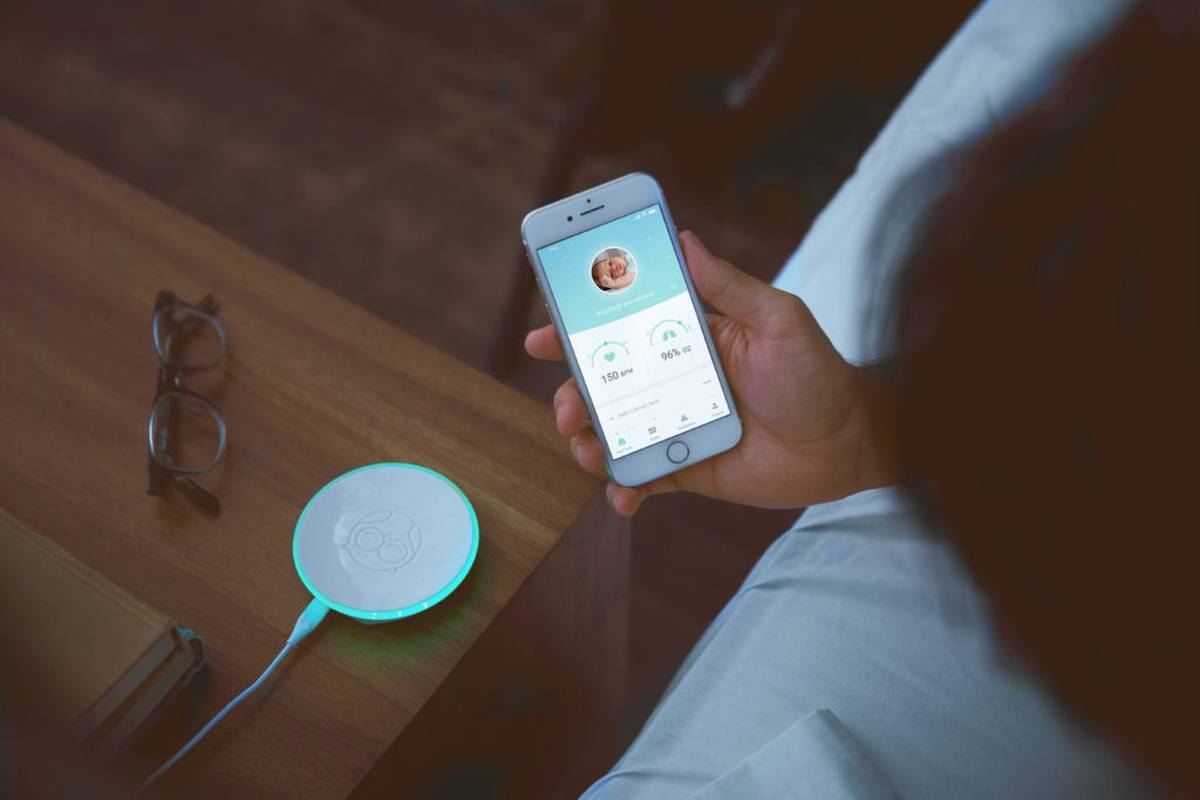
Cord Control
The dangling cord can often be reached even though the baby monitor itself is out of reach. The mounting bracket of VTech's video baby monitors features an ingenious cord management system for stowing away any unused electrical cord. Expert child proofers also recommend using cord control or concealment systems to hide and mount electrical cables in the baby's room. Cord covers have double-sided adhesive on either side, allowing you to attach them to your walls, ceilings, or baseboards to hide unsightly wires. The length can be altered as needed, and the plastic can be painted any colour to suit personal taste. To prevent strangulation, keep the chord at least three feet from the crib when training. Make sure the plugs for any and all lights, music players, white noise generators, clocks, etc. in the room are at least three feet away from the crib. Sliding outlet covers should be installed in the nursery to avoid electrical shock from occurring.
Never
Baby monitors provide an electrical shock threat, so don't use them in the bathroom or anywhere near water. Never ever leave an infant or young toddler unsupervised in the tub.
Quick Installation Tips
- Place the monitor no closer than 3 feet to the crib's edge.
- Never put a baby monitor in or on a crib while the infant is in there.
- Baby monitor cords should be kept at least three feet from the mattress.
- Cover the baby monitor's power cord or use the wind-up function to keep it out of sight.
- Keep the baby monitor away from any water or moisture, including the bathroom.
- Connect the baby monitor to a child-safe outlet.
Set Up… To Fail
There isn't a single baby monitor with the lowest possible rating of one star, but 15 obtained a rating of three stars or less for how simple they are to set up. The manuals can cause unnecessary stress and confusion due to their poor organisation and wording. You have to do a lot of mental gymnastics to make sense of the tiny print and tight diagrams. The instructions for some baby monitors omit crucial details, such as the potential danger of suffocation from electrical wires. Wi-fi baby monitors are convenient since they allow you to check in on your child from your mobile device, but they can be difficult to set up. We found that in order to use one particular baby monitor, in addition to downloading the app on your phone, you also needed to create an account, register the camera, and finally connect it to your router. This would be a time-consuming and boring process even for tech-savvy parents.
The Key Is Sound Quality
Clear audio transmission is the most critical feature for 43% of parents when choosing a baby monitor, regardless of whether they plan to use an audio, wireless, or video monitor. It's not ideal to have to turn up the volume on a low-quality device just to hear your baby cry since the sound has gotten muffled and distorted. About a third of parents (31%) felt that high-quality video was very important to them when choosing a video monitor. We find high-quality monitors like the Motorola MBP36S Digital Video. However, the image is extremely discouraging when it comes to others. You'll be left wondering if your youngster is fast asleep or fully awake as you stare at a fuzzy, jerky, blurry image of them.
So, Are Baby Monitors Bad?
The use of a baby monitor is not a bad idea. With their help, we can protect our child from harm without losing our minds. But (and this is a major but) if you allow your baby to gnaw or yank on the cords, or if the baby monitor has frayed wires from normal use, it can be dangerous.
Baby monitor cords have been the cause of seven deaths and three near suffocations since 2002, according to the U.S. Consumer Product Safety Commission (CPSC). So, how does this occur? When the baby monitor is stationed too close to the crib, the infant may attempt to reach out and play with the cord. The baby runs the risk of strangling himself in the process. This is rather unsettling.
My Baby Nursery has the biggest range of nursery baby monitors for you to choose from.
How To Use A Baby Monitor Properly
The baby monitor must be maintained at least three feet away from any component of the crib, play yard, bassinet, or other safe sleep surroundings. That adds up to around the length of the crib plus six inches. Hide the monitor and its connections from curious small fingers. Do not put a baby monitor inside a crib or on its side.
At the same time, you should check the eating, playing, and sleeping regions of your child whenever they reach a new physical milestone. It's a good idea to perform a routine safety check right now.
- Do you know if your infant can roll over? Great! Get down on your hands and knees and observe the world as if you were them. That's the best approach to notice details you might have missed otherwise.
- Does your infant have the ability to sit up? Awesome! Do the same thing again (and lower the crib mattress).
- Have you seen your baby make any of these developmental leaps? Wonderful! Imagine things from their point of view as we mentioned in the first item. Maintain a risk-free setting for them. All too often, adults underestimate how tall their children actually are.
Other Safety Tips
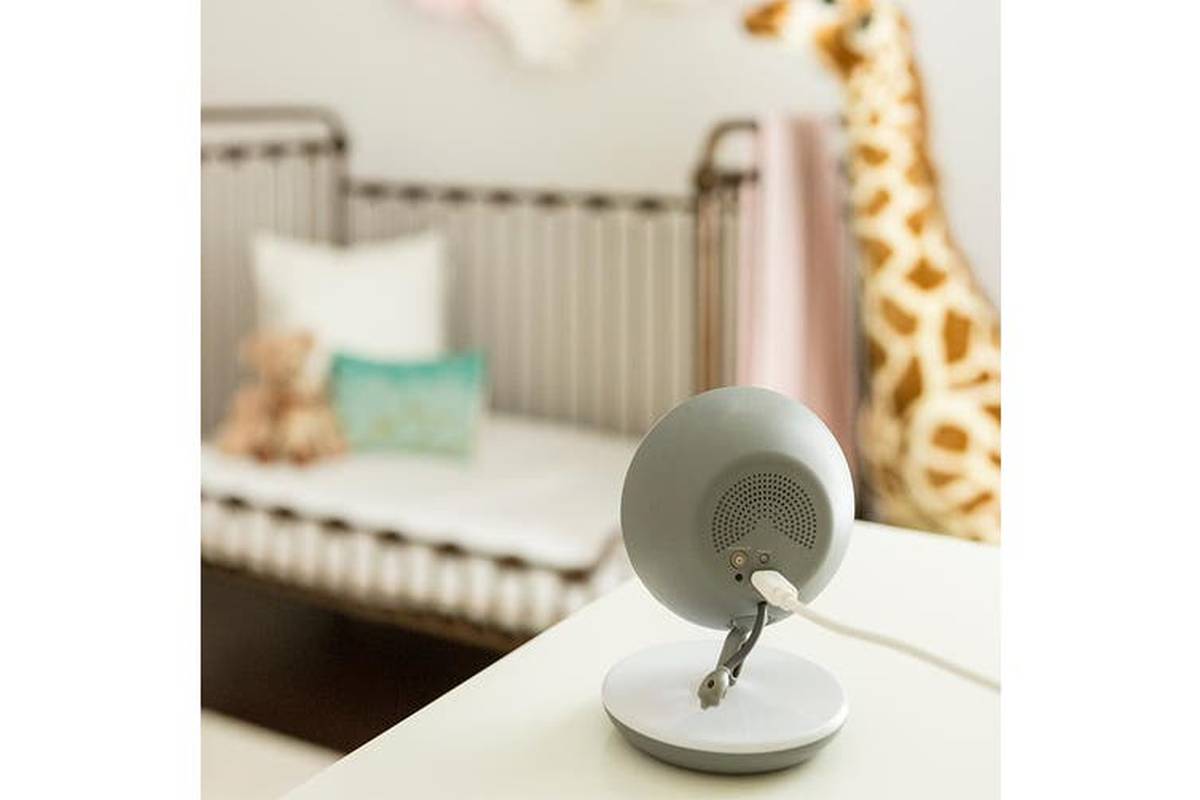
Make sure the blinds' cords are out of the way and the windows are closed. Put covers on the outlets. Cover up those doorknobs. Keep all medicines and cleaning supplies in a secure location. Prioritize these safety measures as soon as possible, if not before, your kid reaches a developmental milestone. To be on the safe side, you should aim to be six months ahead of your kid.
Baby safety requires that you quickly examine the placement of all electric cables, including those attached to the wall, to ensure that they are out of reach of your child.
Check out our post on What’s needed in a baby’s nursery?
The Use Of Baby Monitors
Bedtime.
The answer is yes, we still check on our children while they sleep. The fact that we can reliably put both of our children to bed at the same time is especially helpful now that they are in the age range where they can share a room. The parent monitor is permanently stationed on my nightstand in case either of my children wakes up with an emergency (my son wants to use the restroom, my daughter is having a bad dream, etc.) and requires my assistance.
Naptime.
For a long time, we didn't put the monitor to use during naps, but in December, my kid choked on a piece of his sister's hair clip that I'd left on the dresser. To cut a long tale short, we rushed to the hospital, and he ultimately needed surgery to remove it. After all, we could have avoided the whole thing if we had just used the baby monitor when the baby was napping. Even though you're wide awake and can probably hear if your child needs you, it can be incredibly reassuring to know what your youngster is up to. And now that only my daughter sleeps through the night, we can use the monitor during her nap time to go outdoors and play while she rests. Having a normal range of 1,000 feet, the VM343 allows me to easily keep in touch with my daughter from anywhere in the house or even outside.
Toddler Bed Transition.
After the issue of sleep has been resolved, there are many additional crucial applications for a baby monitor. The transition to a toddler bed is a major life event. At the age of 18 months, our kid began climbing out of his crib, so we had to convert him to a safer bed. Thanks to the video baby monitor, we could tell when he was genuinely in bed and when he was trying to get out of bed to play with toys or read books. Keeping an eye on her was much simpler than ever before thanks to the 2x zoom of the remote pan and tilt camera built into the display.
While I Work Around The House And Watch Them Play.
The kids can't run amok while I'm cleaning the restrooms or mopping the floors. It's been FANTASTIC to just lock the door to the playroom and not worry about them for a while. My children are oblivious to the camera because of its modest size and its placement in an inconspicuous area. The VM343's huge 4.3-inch LCD screen displays full-color video, making it useful both during the day and at night thanks to its automated night vision. Now we can clean the restrooms without worrying about the children as We keep a close eye on them.
Safety.
For a while, we didn't utilise the monitor, and as we already mentioned, that led to an emergency room visit for our son. When We can't be in the same room as the kids, then feel much more at ease knowing that they are being watched through a monitor. As much as possible, always keep dangerous items out of their room, but if We forget something, we can always check on them in time.
Travelling To New Places.
When we go on trips, we always bring the baby monitor. A child's reaction to a new environment, including a bed that isn't their own, can be unexpected. The VM343 is an essential video baby monitor. It also provides the current temperature, so you know if your kid needs an extra blanket or some fleece pyjamas for bedtime.
Communicating.
It's been nice to be able to talk to your husband while he's helping tuck the kids in and in the bedroom, either to remind them to go back to bed or to ask him a question. The monitor includes a two-way, talk-back intercom so that parents can comfort their child without disturbing nap time or nighttime by entering the child's room.
Whether or not you need a baby monitor may be determined by how big your house is. If you have a small apartment, you might not think you need a baby monitor because you won't have any trouble hearing your child if they get up in the night. A baby monitor allows you to keep tabs on your sleeping child even if you're on the other side of a large room or the home.
Identifying the source of an unfamiliar cry is much easier with a monitor. You can tell if your baby is hungry and needs you to come in to feed them, if they are in distress and need you to come in to comfort them, or if they are just groaning in their sleep and you should not risk waking them up by going in to check on them.
Babies generate a lot of noise, and while some of it may warrant your attention, if you have a monitor you may be able to hear practically everything your baby does, which could keep you up at night.
If, as your child becomes older, you feel the need to enter the room at the slightest sound you hear on the monitor, consider that it may be your frequent entrances and exits, rather than the sounds themselves, that are upsetting your child. Remember that babies sometimes scream or fuss while sleeping, and that this is not necessarily cause to immediately intervene.
Many modern baby monitors even let you watch your sleeping infant on the screen. These can reassure you that your kid is fine, as you can observe how much they are groaning and judge whether or not they need you to put them back to sleep based on that.
In addition to watching your baby's face, some monitors feature sensor pads that can be placed under the mattress to trigger an alarm if your child hasn't moved for a predetermined amount of time.
However, regardless of whether you choose to use a baby monitor or not, keep in mind that it is not a substitute for parental supervision of the infant and will not prevent or treat any sleep disorders. It's just a tool to keep tabs on your child without constantly entering their room.
Parents have a continuing obligation to better themselves via education so that they may better care for their children and ensure their safety. These days, new research, innovations, and illuminating statistics are all just a click away, thanks to the ubiquity of information. With the help of this safety education and the many new, high-tech advancements made available to customers by safety-savvy product makers, we can now cover so much more ground in our crucial role as parents. Thanks for continuing to be a practitioner parent by reading as much as you can and being extra watchful with supervision; you keep working hard to bring safety issues like these to light. Stay well and safe!
Conclusion
Parents greatly value baby monitors because they allow us to watch our children even when we can't be with them physically. Despite the convenience of the baby monitor, some parents need more expertise to use it effectively. Here are some suggestions for making the most of it. One example of a modern monitor that may be mounted on the wall is VTech's Safe&Sound® Pan & Tilt Full Color Video Monitor. VTech's infrared LED night vision provides enhanced visibility in complete darkness beyond the human eye's capabilities.
Keep your baby monitor away from water and the bathroom to avoid the risk of an electrical shock. Convenient though they may be, Wi-Fi baby monitors often require technical expertise to instal. For 43% of parents, a baby monitor's ability to transmit sound is the most important factor. According to the U.S. Consumer Product Safety Commission, seven deaths and three near-suffocations have been attributed to monitoring cords since 2002.
The baby monitor must always be at a safe distance of three feet away from the baby's crib, playpen, or another sleeping area. You need a baby monitor if you want to keep an eye on your baby as they sleep. Being able to talk to my daughter from any room in the house or outside, thanks to a usual range of 1,000 feet. The VM343's large, 4.3-inch LCD screen is perfect for watching videos day or night. The monitor has a talk-back feature that allows parents to soothe their child without entering the room during naptime or bedtime.
Babies make a lot of noise, and with a monitor, you can hear almost everything they do, which may prevent you from getting any sleep. If your kid is crying, you'll know it; if they're hungry, you'll know they need to be fed.
Content Summary
- However, some parents need more background knowledge to utilise the baby monitor properly.
- To get the most out of your baby monitor and give you some much-needed peace of mind, We have compiled a few pointers on how to get the most out of it.
- Baby monitors are a common alternative when you need to keep an eye on your kid as they sleep.
- Check out our range of baby nursery products and furniture for all your baby's needs.
- Also, read the caution label on the baby monitor's power cord.
- Ideally, the baby monitor should be installed at least three feet from the baby's sleeping area, whether that's a crib, a pack 'n play, a bassinet, or something else.
- Mounting the monitor at a distance of three feet ensures that you won't have to reposition it as your child gets taller and their reach expands.
- Pick a spot where you can see into the crib easily from where the baby monitor is installed.
- High up on the wall, out of reach, is a great vantage point.
- VTech's infrared LED night vision improves visibility in total darkness to the extent that it exceeds what the naked eye perceives.
- The mounting bracket of VTech's video baby monitors features an ingenious cord management system for stowing away any unused electrical cord.
- Expert child proofers also recommend using cord control or concealment systems to hide and mount electrical cables in the baby's room.
- Keep the chord at least three feet from the crib when training to prevent strangulation.
- You are at least three feet from the crib in the room.
- Keep the baby monitor away from water or moisture, including in the bathroom.
- Connect the baby monitor to a child-safe outlet.
- Clear audio transmission is the most critical feature for 43% of parents when choosing a baby monitor, regardless of whether they plan to use an audio, wireless, or video monitor.
- About a third of parents (31%) felt that high-quality video was very important when choosing a video monitor.
- But (and this is a major but) if you allow your baby to gnaw or yank on the cords, or if the baby monitor has frayed wires from normal use, it can be dangerous.
- When the baby monitor is too close to the crib, the infant may attempt to reach out and play with the cord.
- It's a good idea to perform a routine safety check right now.
- The answer is yes, and we still check on our children while they sleep.
- The fact that we can reliably put both of our children to bed simultaneously is especially helpful now that they are in the age range where they can share a room.
- The parent monitor is permanently stationed on my nightstand in case either of my children wakes up in an emergency (my son wants to use the restroom, my daughter has a bad dream, etc.)
- After the sleep issue has been resolved, there are many additional crucial applications for a baby monitor.
- The VM343's huge 4.3-inch LCD screen displays full-colour video, making it useful both during the day and at night, thanks to its automated night vision.
- Now we can clean the restrooms without worrying about the children as We keep a close eye on them.
- When We can't be in the same room as the kids, Then we feel much more at ease knowing they are being watched through a monitor.
- When we go on trips, We always bring the baby monitor.
- It's been nice to talk to your husband while he's helping tuck the kids in and in the bedroom, either to remind them to go back to bed or to ask him a question.
- The monitor includes a two-way, talk-back intercom so parents can comfort their child without disturbing nap time or nighttime by entering the child's room.
- Whether or not you need your house size may determine a baby monitor.
- You can tell if your baby is hungry and needs you to come in to feed them, if they are in distress and need you to come in to comfort them, or if they are groaning in their sleep and you should not risk waking them up by going in to check on them.
- Babies generate a lot of noise, and while some may warrant your attention, if you have a monitor, you may be able to hear practically everything your baby does, which could keep you up at night.
- Many modern babies monitor even let you watch your sleeping infant on the screen.
- However, regardless of whether you choose to use a baby monitor, keep in mind that it is not a substitute for parental supervision of the infant and will not prevent or treat any sleep disorders.
- It's just a tool to keep tabs on your child without constantly entering their room.
- Parents are obligated to better themselves via education to better care for their children and ensure their safety.
- With the help of this safety education and the many new, high-tech advancements made available to customers by safety-savvy product makers, we can now cover much more ground in our crucial role as parents.
FAQs About Baby Monitor
Your baby should sleep in your room for the first six months. However, parents can use a monitor if they need to leave the room while their baby naps during the day, and once their baby is old enough to sleep in her room, they can also use the monitor at night. For safety reasons, babies should sleep in the same room as their parents for the first six months.
Even though there is no one set guideline, most experts recommend keeping a baby monitor on your child for at least the first year of their life. On the other hand, some evidence suggests that earlier disabling of the monitor is beneficial to developing healthy sleeping patterns in both the parent and the child.
From our experience, the best places to put a baby monitor are:
- Wall-mounted in a corner near the ceiling is our preferred location.
- Placed high on a shelf: if wall-mounting is not an option in your baby's bedroom, use a tall shelf or wardrobe.
Most parents of young children agree that a baby monitor is indispensable. After all, it's impossible to monitor your child around the clock, so having a device that lets you check in on them even when you're not there is invaluable.
A safe distance for cords is three feet, so keep them out of the crib, bassinet, play yard, or wherever your child sleeps. Realise that the baby's safety zone will evolve. A baby monitor should never be placed inside a crib or near its edge. Remember to maintain a distance of at least three feet from your screen.

